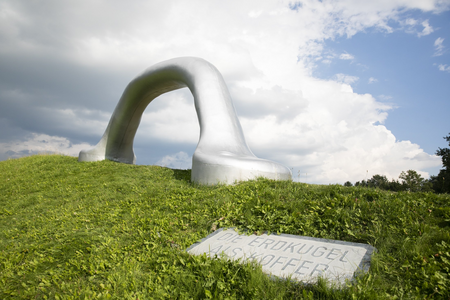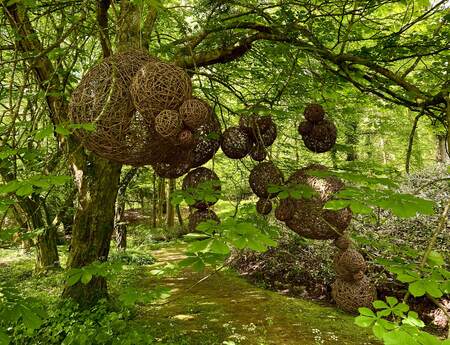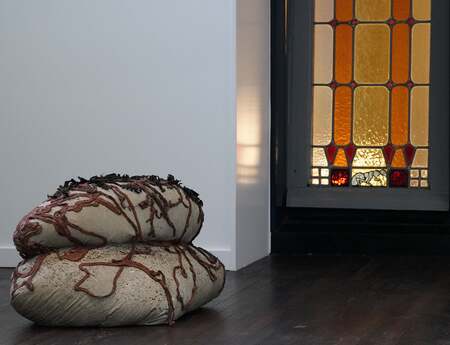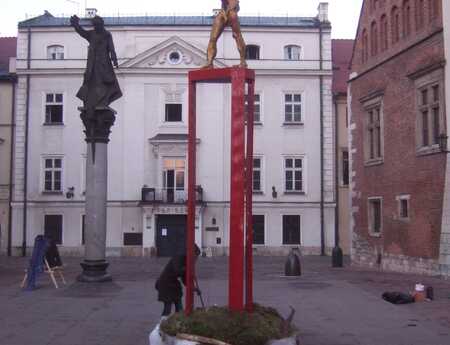The Essence of the Austrian Sculpture Park
When sculptures and nature come together, they react to each other. A relationship of change develops, which permanently alters the retelling of history over the course of time. In the garden of man-made nature, we are specially invited to the Austrian Sculpture Park, to engage in a dialogue about the sculptures that are integrated into the landscape. We come across contemporary sculptures, from the abstract, to found or compacted objects. Some of the works incorporate light, shadow, water or air, evolving as they grow or interacting with us.
Two Parts of the Park Merging Together
In the garden on the hill we find ourselves in an area once used for quarrying gravel, which has since been turned into a swimming pool and a large-scale recreational facility. The landscape architect, Dieter Kienast, used a four-metre-high grass bank as a border in order to protect the area. We enter an extraordinary and unique terrain, where we find grass pyramids that contour the landscape, a geometric water lily pond with lily pads and a purposely selected café, cherry trees, lavender bushes or find pieces of grass structured by bamboo. New lines of sight are opened up, as is the game between expansion and seclusion. Special plants such as lady’s mantle, hyacinths, daffodils, tulips and a lime tree alter our perceptions of the surroundings with their fragrance and changing colours.
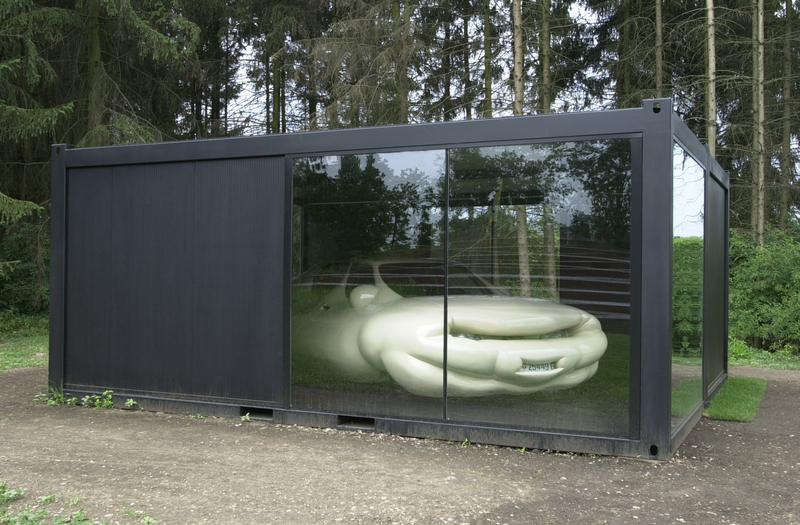
In the garden of the pheasant, Kienast cites the history of garden landscaping since ancient times and, whilst reflecting the minimalism of the 1960s, stages special garden spaces. Surrounded by high beech hedges, a unique, calming lotus blossom pond opens up with the contemplative centre of the island referencing art that would have been found in ancient Egyptian gardens. In its centre we are able to linger at the sculpture made of furniture surrounding a tree made by Peter Kogler, which brings nature and art together.
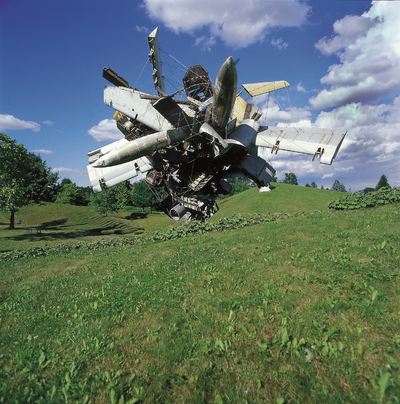
This part is followed by a tapering stairway construction, the stairway to heaven, as a reference to our connection to places beyond Earth and the effects of the invention of central perspective in the Renaissance. Here we find sculptures that were created in an exploration of the body, bodily mutability, displacements and changes of perspective. Next, we see a mysteriously hidden slope of lawn where imaginably, ancient forest deities dwell. Here a mirror reflects the celestial image that surrounds us and identifies us as beings in a parallel universe. Cloud formations can be read in the trimmed yew figures, which reference the Baroque period. Standing in the middle of them is the oldest sculpture in the park, Herbert Boeckl’s Atlantis from 1940/44.
In the garden of roses and perennials that references French garden, a bronze waterfall by Brian Hunt results in both a dynamic response, and makes up stop in our tracks. An oversized metal rose by Rudi Molacek addresses transformation in and between nature and technology. A large grassy landscape with extraordinary magnolias is followed by a maze as one of the oldest cutltural-historiacal motifs.
The Variety of Shapes
The history of sculpture since classical modernism is shown, negotiated and further developed in the park with more than 75 permanent and temporary works that change yearly. Classical materials like stone, bronze or marble are used here, as well as concrete, glass, plastic, polystyrene, mirrors, steel, scraps, and cotton wool. The palette ranges from anthropomorphic sculptures to furniture sculptures and with that, integration into the world of work through to conceptual, computer-generated, or linguistic works.
Heimo Zobernig positions a sculpture that can be seen from afar right at the first lawn pyramid in the park. Industrially manufactured concrete construction rings, lined up like a tower, provide an obvious setting for questioning the relationship between art, people and the environment.
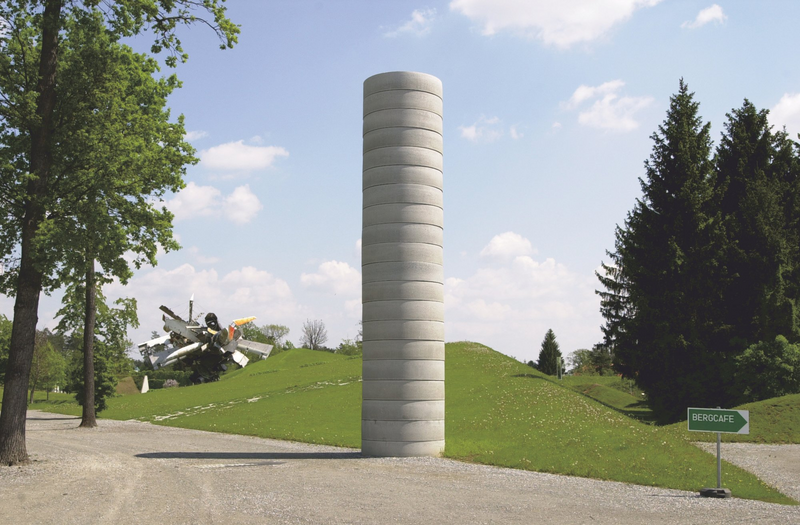
Whilst Fritz Wotruba opens up and expands the human form to new abstract dimensions, and Thomas Stimm’s Terranian Platform forms a gathering point on Earth. Franz West and Otto Zitko’s Who is Who demonstrates an imaginary and open level of dialogue. Works by Heinz Gappmayr, Ingeborg Strobl and Plamen Dejanoff all prove that language and writing can also be sculptural.
Fat House and Fat Car by Erwin Wurm not only challenge our society, they also reinterpret their surroundings. Thus, the meadow becomes a private garden or a street. Nancy Rubin’s sculpture made from aeroplane parts creates the illusion of an airfield. Michael Schuster’s Concrete Boat transforms the ground into waves. Hans Hollein’s Golden Calf turns its plinth into tracks. Yoko Ono’s crosses are reminiscent of Golgotha, and Tobias Rehberger’s Anti-social Daughter. Peter Weibel, on the other hand, relativises and clarifies our relationship to the world as both a global, and analogue-digital problem with Globe as a Suitcase.
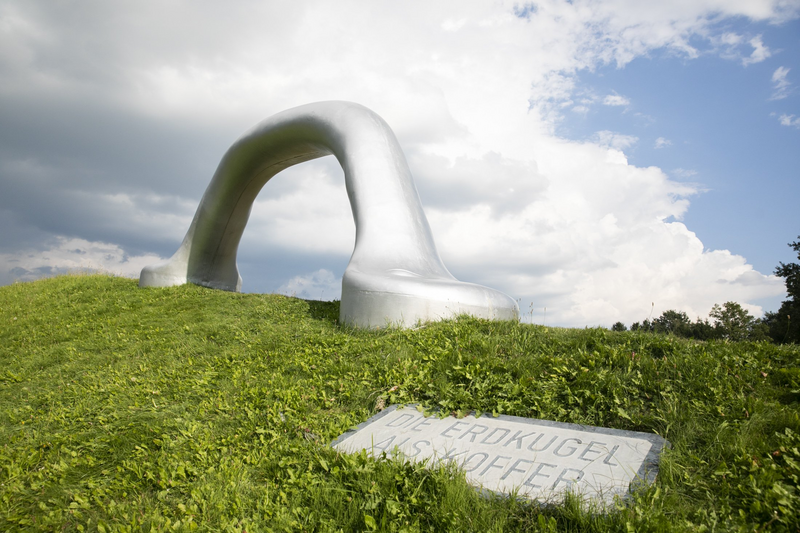
Our experience, and the sculpture in its portrayal of the transformation of time and space, is explored and addressed using different materials, strategies and self-transforming or interactive exhibits just as much as it is through social, scientific or economic questions. Thus, Timm Ulrichs' Dancing Trees unhinges our idea of the immutability of existing nature, Mario Terzic lets living trees grow into an ark, and the circular aspen trees created by Bernhard Leitner open up the rigid structure of the concert hall. Werner Reiterer turns the idea of a sculpture being fixed in place on its head through the playful and enigmatic form of a huge magenta balloon. It inflates again and again like a Sisyphean task, only to collapse in on itself with a loud whistle.
The fact that water, wind, shadow or light each have sculptural elements is shown by an interactive fountain by Jeppe Hein with the self- title Did I miss something?, Oswald Oberhuber's basket, or Giuseppe Uncini's Unità Cellulare.
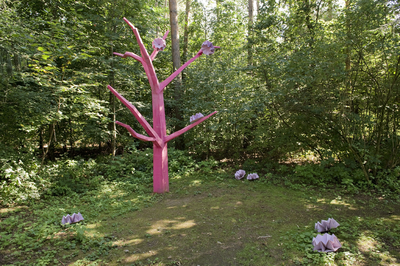
Fritz Hartlauer deals with cells, their structures and growth, Jörg Schlick with the discovery of the genome, Hartmut Skerbisch with the structure of our world, and Hans Kupelwieser with conditions of chance. Wolfgang Becksteiner reflects on economic mechanisms, and Matt Mullican, on architectural-logistic and symbolic ones.
A Dynamic Dialogue Between Art and Nature
Every year, performative, self-dissolving, inscribed or interconnected strategies, and expansions on our concept of sculpture, are made temporarily visible and tangible by artists in residence.
Considerations about the contents of the park are made to highlight the development of art into sculpture, ecological, economic, and social problems, democratic-political considerations, and their meaning. The dialogue between location, viewer and sculpture is intended to make all these considerations visible in a variety of ways and to make statements about art. They allow us to consider things about ourselves and society, its conflicts and dreams, and to create meeting spaces.
In this sense, the Austrian Sculpture Park is used both to widen the scope for a dialogue between art, people and nature, and expand the conversation on contemporary sculpture in order to better understand the language of this art form.
Author: Dr. Elisabeth Fiedler
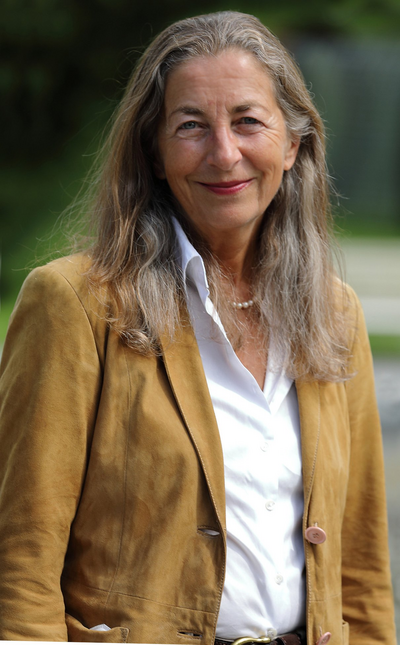
Art historian Elisabeth Fiedler is director and chief curator of the Austrian Sculpture Park and the Institute for Art in Public Space Styria at the Universalmuseum Joanneum. In addition to her curatorial activities, project development and project implementation as well as research, lecturing, and publication activities in the field of contemporary art form the focal points of her work.
Translation: Hannah Griffiths
Published: November 2021
